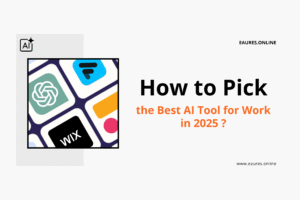Table of Contents
9 Best AI Tools for SEO 2025
Why the Best AI Tools for SEO Matter in 2025
Search is changing fast. In 2025, the most successful teams blend human judgment with automation to move faster, raise content quality, and protect brand trust. The Best AI Tools for SEO don’t just generate copy; they connect strategy to execution—turning keyword research into briefs, briefs into drafts, and drafts into optimized, interlinked pages that actually rank. They also help technical teams scale audits, spot opportunities in log files and crawl data, and maintain site health without burning cycles on repetitive work.
Underpinning all of this is a principles-first approach to SEO. The Best AI Tools for SEO should support quality signals such as experience, expertise, authoritativeness, and trust, rather than chasing shortcuts. Teams that pair automation with Google’s guidance—for example, aligning with Search Essentials and monitoring Core Web Vitals—ship better pages, at higher velocity, with fewer surprises. For reference, you can review Google’s current guidelines in the Search Essentials documentation and the latest Core Web Vitals guidance to ensure tooling choices reinforce fundamentals rather than undermine them.
How We Selected the Best AI Tools for SEO
To curate the Best AI Tools for SEO in 2025, we assessed platforms and assistants across five dimensions that matter in real-world operations:
- Strategic fit — Does the tool improve discovery, prioritization, and planning, not just page-level output?
- Content quality — Can it create or augment high-quality drafts aligned to intent, with accurate topical coverage and clear structure?
- Optimization depth — Does it handle entity coverage, internal linking opportunities, schema suggestions, and SERP-informed outlines?
- Technical leverage — Can it accelerate audits, crawling, internal link mapping, log analysis, and programmatic SEO?
- Governance and collaboration — Does it support workflows (briefs, approvals, style guides), versioning, and permissioning that teams rely on?
We also looked at interoperability (exports, APIs, connectors), visibility (analytics, content scoring), and cost-to-impact. Every recommendation below is paired with the types of SEO problems it solves best.
Note: The ranking is pragmatic rather than absolute. Different organizations will weight speed, safety, price, or governance differently. You’ll find “best for” guidance within each review to map tools to your use case.

The 9 Best AI Tools for SEO 2025 (Hands‑On Reviews)
1) Semrush AI (ContentShake AI + SEO Toolkit)
Best for: End‑to‑end workflow—research → briefs → drafts → optimization.
Semrush’s platform has matured into a full-stack growth engine. The AI layer (including ContentShake AI) helps teams move from keyword discovery to publishable content with fewer handoffs. What elevates Semrush into the Best AI Tools for SEO is not just content generation; it’s the coupling of SERP data with practical production workflows—topic research, competitive gaps, content templates, and on-page checks that align with real keyword difficulty and search intent.
Where it shines
- SERP-driven briefs: Pulls headings, entities, and search questions into scannable skeletons that writers can trust.
- On-page optimization: Suggestions reflect actual SERP leaders, making recommendations feel less arbitrary.
- Competitive monitoring: Integrates rank tracking, toxic backlinks checks, and backlink prospects to guide content prioritization.
Recommended workflow
Use Keyword Magic to identify clusters, then generate a brief in ContentShake AI, inserting internal link targets and schema stubs in the same pass. A final on-page check tightens headings, entities, and meta tags before CMS import. For product or category templates, save winning patterns and reapply them programmatically.
For official docs and product details, browse the Semrush knowledge base while evaluating your stack.
2) Ahrefs with AI Assistance
Best for: Opportunity sizing and content gap discovery at scale.
Ahrefs remains a powerhouse for link and keyword intelligence. Paired with AI prompting and templates, it’s excellent at turning raw discovery into action—spotting competitor content gaps, surfacing under‑served intents, and translating them into production-ready outlines. If your content plan depends on defending or expanding against specific competitors, Ahrefs earns its place among the Best AI Tools for SEO.
Where it shines
- Content gap to outline: Export competitor headings and questions, then prompt your assistant to map a draft that closes the gap with authority.
- Internal link discovery: Use Site Explorer and Top Pages to seed link hubs; AI can propose anchor text variants that read naturally.
- Backlink-informed prioritization: Prioritize topics with feasible link profiles to raise probability of ranking.
Recommended workflow
Run a content gap analysis between your domain and 3–5 rivals. Feed the top 30–50 queries into your assistant to generate briefs that include FAQs, competitors to cite, and edge cases to test. Use Site Audit exports to create an AI‑generated “fix-first” list spanning titles, metas, and soft 404s.
See feature explanations in the Ahrefs Help Center to match capabilities to your needs.
3) SurferSEO (Content Editor + Audits)
Best for: SERP-aligned content optimization and entity coverage.
Surfer’s Content Editor has become synonymous with practical, SERP‑informed optimization. The reason Surfer belongs to the Best AI Tools for SEO list is its disciplined approach to on‑page coverage: it analyzes term usage across top results and turns this into transparent, adjustable targets. It’s a reality check for drafts—particularly for mid-funnel or long‑form informational content that must cover entities thoroughly without bloating.
Where it shines
- Entity coverage and headings: Scores content against SERP leaders and prompts for gaps.
- Content velocity: Enables editors to tighten multiple drafts quickly, standardizing quality across a team.
- Briefs and outlines: Bridges research and writing by suggesting structures grounded in actual ranking pages.
Recommended workflow
Start with a Semrush or Ahrefs seed list, then run priority topics through Surfer to shape outlines and targets. During editing, keep writer prompts light; use Surfer suggestions to refine sections most likely to impact dwell time, such as intros, section transitions, and FAQs.
Explore features via Surfer’s documentation as you align optimization practices with your editorial style.
4) Clearscope
Best for: Editorial consistency and shareable, writer-friendly guidance.
Clearscope remains a fan favorite for editors because it’s built for collaboration. It scores drafts, suggests terms, and provides a clean, low‑friction UI that helps large teams maintain consistency across dozens of writers. If your process relies on brief → draft → edit with multiple handoffs, Clearscope earns a spot among the Best AI Tools for SEO for its humane approach to optimization.
Where it shines
- Writer-first UX: Clear suggestions, no gimmicks, and excellent Google Docs integration.
- Repeatable briefs: Reuse guidelines to keep topic depth and tone consistent across similar pages.
- Stakeholder trust: Scores and suggestions are easy to explain to non‑SEOs.
Recommended workflow
Attach Clearscope to your editorial template: required entities, suggested H2s, and sample questions. Encourage writers to use the score as a coaching tool rather than a finish line, then let editors focus on structure, authority signals, and UX polish.
Learn more on Clearscope’s product pages as you map guidelines to your content calendar.

5) MarketMuse
Best for: Topical authority, inventory analysis, and content planning.
MarketMuse is engineered for big content programs. Its strength is planning: creating topic models, assessing inventory quality, and guiding teams toward the pieces that will most improve topical authority. For sites with hundreds or thousands of URLs, MarketMuse is one of the Best AI Tools for SEO because it turns an unmanageable content universe into a prioritized roadmap.
Where it shines
- Inventory insights: Scores existing pages, revealing quick wins and content debt you should repay.
- Topic models: Encourages coverage of related subtopics to strengthen authority and link depth.
- Prioritized planning: Suggests where updates vs. net-new pieces will move the needle.
Recommended workflow
Audit a category or product line to reveal thin coverage, then generate briefs that build supporting clusters. After publishing, revisit inventory scores quarterly to keep the knowledge graph fresh.
See methodology and product updates from MarketMuse to gauge fit for your scale.
6) Jasper
Best for: Brand-safe, multi-channel content that stays on voice.
Jasper pairs generation with brand governance, making it a strong fit for marketing teams that need consistent tone across blog posts, landing pages, and lifecycle assets. It integrates style guides, voice training, and collaboration features that reduce editing overhead—hence its inclusion among the Best AI Tools for SEO when brand voice matters as much as rankings.
Where it shines
- Brand voice and style guides: Train on your best content to keep tone consistent across formats.
- Templates for acquisition and nurture: Repurpose SEO drafts into ads, emails, and social without manual re‑writing.
- Team permissions and review: Control who can publish what and track changes.
Recommended workflow
Feed Jasper a brief (from Surfer, Clearscope, or MarketMuse), then generate a first draft with brand voice enabled. Use editorial review to humanize examples, add original visuals, and insert expert quotes—signals that reinforce E‑E‑A‑T.
For platform capability details, review Jasper’s documentation before rolling out across teams.
7) Frase
Best for: Fast SERP research, outlines, and FAQ coverage.
Frase excels at the front half of the SEO process: turning a query into a smart outline, pulling headings from top results, and suggesting FAQs worth answering. It’s lightweight, fast, and budget-friendly—making it a practical addition to the Best AI Tools for SEO list for teams that want to speed up research without heavy process change.
Where it shines
- Outline generation: Clear, SERP-informed skeletons ready for editorial polish.
- FAQ and People Also Ask coverage: Auto‑suggested questions mitigate thin content and pogo‑sticking.
- Briefs for freelancers: Provide source links and must-cover entities to raise first‑draft quality.
Recommended workflow
Have strategists create SERP outlines and FAQs in Frase, then pass them to writers with required internal links and citations. Use an optimizer (Surfer or Clearscope) downstream to refine entity coverage and headings.
Explore practical tips in the Frase knowledge base to tailor it to your pipeline.
8) Screaming Frog + LLM Recipes
Best for: Technical SEO automation, large-scale on‑page fixes, and internal linking.
Screaming Frog remains indispensable for site audits, but it becomes one of the Best AI Tools for SEO when paired with an LLM. Combining crawl exports with AI lets you rewrite titles at scale, generate better meta descriptions, propose canonical fixes, and identify internal links that matter. You can also use Screaming Frog’s Custom Extraction to pull entities, schema, or component-level content for analysis and automated QA.
Where it shines
- Bulk suggestions: Create safe, human-reviewable spreadsheets of title/meta improvements.
- Internal linking opportunities: Map topics to hub pages; AI drafts anchor variants and insertion sentences.
- Schema validation: Extract structured data and have AI flag missing or malformed fields before shipping.
Recommended workflow
Crawl priority directories and export titles, H1s, and metas. Prompt your assistant to propose improved titles within character limits, with “reason” fields that explain each change. For more complex tasks—like producing regex for redirects or transforming log snippets—lean on specialized developer tools; many teams find value studying the best AI code assistants in 2025 to support technical SEO at the edges of marketing and engineering.
9) ChatGPT (and Choosing the Right Model Family)
Best for: Versatile SEO assistant—briefs, outlines, data wrangling, regex, and editorial coaching.
General-purpose assistants like ChatGPT are still core to daily SEO work: planning content clusters, generating outlines, rewriting headings, drafting schema, and even creating QA checklists. Because model choice affects reliability, context window limits, and multimodal abilities, it’s worth comparing families carefully. If you’re deciding between frontier models, this Claude vs ChatGPT vs Gemini vs Llama in 2025 comparison helps you weigh context windows, reasoning, multimodality, and pricing across common SEO workflows.
Where it shines
- Brief → draft acceleration: Translate research into consistent outlines and voice‑matched drafts.
- Regex and spreadsheet helpers: Build Excel/Google Sheets formulas and regex patterns for redirects or GA4 filters.
- Schema, FAQs, and summaries: Draft schema.org JSON‑LD, consolidate SME interviews, and produce meta variations.
Recommended workflow
Create reusable prompt frameworks. For example, a “Research → Brief → Draft → Optimize → Interlink” chain can be templatized and used across categories. If you’re comparing model behavior for long research documents or RAG-heavy workflows, this 9‑dimension benchmark of Gemini 2.5 vs Claude Opus 4.1 can clarify trade‑offs in coding, retrieval, multimodality, safety, and cost. And if you want to spice up ideation with smart prompt patterns, many of the techniques in 50 powerful AI prompts for product managers translate directly to SEO planning and prioritization.
For platform specifics, you can review ChatGPT’s product page and explore workflows that fit your team size and governance needs.

What Makes the Best AI Tools for SEO “Best” (and Not Just Fast)
The Best AI Tools for SEO help you move quickly without cutting corners. Speed alone doesn’t win; what wins is relevance (matching intent), depth (covering entities and questions), trust (expert quotes, citations, sources), UX (readability, structure, page experience), and measurement (instrumentation, testing, iteration). Tools should reinforce these elements, not distract from them.
- Align with Google’s guidance: Build processes around the Search Essentials and keep a close eye on page experience metrics via Core Web Vitals.
- E‑E‑A‑T in practice: Structured author bios, original insights, and citing authoritative sources increase trust. See Google’s discussion of E‑E‑A‑T to calibrate editorial standards.
- Data integrity: Use tools that show where suggestions come from (SERP sampling, entity lists, competitor references).
- Human in the loop: AI proposes; humans dispose. Final drafts should be factual, on‑brand, and useful.
Repeatable Workflows That Combine the Best AI Tools for SEO
Workflow 1: Keyword Research and Clustering
- Discover & size: Use Semrush or Ahrefs to gather seed keywords and competitors.
- Cluster with intent: Ask your assistant to cluster queries by search intent and funnel stage.
- Prioritize by potential: Combine difficulty, traffic potential, and authority to pick near‑term wins.
- Create hub‑and‑spoke plans: Map hub pages to spokes, assigning internal links from high‑authority URLs.
Why it works: This reduces duplicated content and ensures topical depth across clusters—the hallmark of teams that consistently rank.
Workflow 2: Brief → Draft → Optimize (the Content Core)
- Brief: Generate SERP‑informed outlines in Frase or Surfer; specify entities, FAQs, and internal link targets.
- Draft: Produce a first pass in Jasper or ChatGPT, with brand voice and E‑E‑A‑T guidelines enabled.
- Optimize: Run through Clearscope or Surfer to tighten headings, entities, and on‑page details.
- Enrich: Add original graphics, quotes, and data; embed schema.org JSON‑LD.
- Publish & measure: Track rankings and engagement; note drafts that need iteration.
Pro tip: Don’t chase 100/100 content scores blindly. Use them as guardrails, then bias toward clarity and usefulness.
Workflow 3: Technical SEO at Scale
- Crawl: Use Screaming Frog to capture titles, H1s, metas, links, and schema across key directories.
- Propose fixes: Send exports to your assistant to generate improved titles (with character caps), meta descriptions, and missing alt text.
- Validate schema: Extract JSON‑LD and ask AI to flag missing required properties per schema.org definitions.
- Plan redirects: Prompt AI to propose canonical/redirect logic and provide regex samples for review.
- Implement safely: Keep humans in the loop; test changes in staging; deploy in batches.
Workflow 4: Internal Linking That Moves Rankings
- Identify hubs: Use Ahrefs Top Pages and Semrush Site Audit to find strong internal pages.
- Generate candidates: Ask AI to propose insertion sentences and anchor variants for target pages.
- QA & implement: Enforce anchor diversity and proximity to relevant copy; avoid “over‑optimized” anchors.
- Monitor: Track target page rankings and crawl depth to see if discoverability improves.
Workflow 5: Programmatic SEO Without the Bloat
- Define templates: For locations, products, or services, create a consistent structure and data schema.
- Generate at quality: Use Jasper or ChatGPT to fill variable fields with editorial oversight.
- De‑duplicate: Run drafts through Surfer/Clearscope to ensure uniqueness and entity coverage.
- Measure rigorously: Monitor indexation, CTR, and engagement to prune low performers quickly.
Prompt Patterns That Make the Best AI Tools for SEO More Reliable
The Best AI Tools for SEO perform measurably better when prompts are specific, constrained, and testable. Here are reusable patterns:
H3: Research to Outline
- “SERP+Intent Outline”
Goal: Generate a research-backed outline.
Prompt skeleton: “You are an SEO editor. Given the query [keyword], produce: (1) target reader and intent, (2) H2/H3 outline aligned to top‑ranking pages, (3) must‑cover entities, (4) 8–12 FAQs not answered well, (5) suggested internal links to these page slugs: [list]. Keep it factual and concise.”
H3: On‑Page Optimization
- “Title & Meta Variants”
Goal: Create safe alternatives that stay on‑brand and under character limits.
Prompt skeleton: “Suggest 10 title tags ≤60 characters and 10 meta descriptions 150–160 characters for the page below. Include a rationale column and avoid repeating head terms.”
H3: Internal Linking
- “Anchor Variations + Insertion Sentences”
Goal: Improve discoverability without anchor stuffing.
Prompt skeleton: “Given this draft and the target URL, propose 8 anchor variations (mix of exact/partial/branded) and 8 insertion sentences that fit naturally within these sections: [list].”
For broader ideation and planning, many techniques in 50 powerful AI prompts for product managers adapt cleanly to SEO—especially structured thinking patterns like ‘Goals → Signals → Metrics’ and ‘Assumptions → Tests’.
Governance, E‑E‑A‑T, and Risk Management
AI should improve quality, not dilute it. The Best AI Tools for SEO include structures that keep drafts trustworthy and compliant with Google’s priorities:
- Human review: Require editorial approval before publish; track changes in tools like Jasper or Docs.
- Source hygiene: Encourage citing primary sources and linking to relevant standards (for example, the Search Essentials page) where appropriate.
- Authorship and accountability: Use real expert bylines and bios; maintain internal notes for fact‑checks.
- Change management: Roll out large on‑page changes incrementally; use A/B or controlled experiments; monitor via GSC and analytics.

FAQs: Choosing the Best AI Tools for SEO in 2025
Q1: Will using AI to draft articles hurt rankings?
No—what matters is usefulness, accuracy, and reader value. AI‑assisted drafts that are reviewed, enriched with original insights, properly cited, and aligned with E‑E‑A‑T guidance can perform well. Low‑value automation targeting search engines instead of people is the problem, not the tooling.
Q2: Which single tool should a small team start with?
If budget is tight, pair a general assistant like ChatGPT with Surfer or Clearscope. That gives you research/drafting plus reliable on‑page optimization—two pillars of the Best AI Tools for SEO mix.
Q3: How do I choose between ChatGPT, Claude, and Gemini for SEO?
Look at context window, reasoning quality, multimodal needs, and cost. This Claude vs ChatGPT vs Gemini vs Llama in 2025 comparison outlines practical differences by use case. If you’re debating two top options for long‑context tasks, the Gemini 2.5 vs Claude Opus 4.1 benchmark offers a structured, 9‑dimension view.
Q4: Can AI help with technical SEO?
Yes. Screaming Frog exports plus an assistant can produce bulk title/meta suggestions, identify internal link opportunities, and surface schema gaps. For regex, scripts, and automations, it can help to learn from the best AI code assistants in 2025 so you can collaborate effectively with engineering.
Q5: What metrics should we monitor post‑publish?
Watch impressions, CTR, and average position in GSC; engagement and conversions in analytics; and page experience via Core Web Vitals. Build a weekly review ritual so AI‑accelerated content continues to improve.
Final Take: Building a Durable Stack of the Best AI Tools for SEO
The winning 2025 stack blends strategic discovery (Semrush, Ahrefs), precise optimization (Surfer, Clearscope, MarketMuse), brand-safe generation (Jasper, Frase), technical leverage (Screaming Frog + LLM), and a versatile assistant (ChatGPT). None of these alone guarantees results; together—guided by Search Essentials, E‑E‑A‑T, and disciplined measurement—they help teams ship better content, faster.
Treat tools as multipliers, not replacements. Templates, prompt frameworks, and editorial standards make the Best AI Tools for SEO even better. Start small, prove impact, and scale what works.




